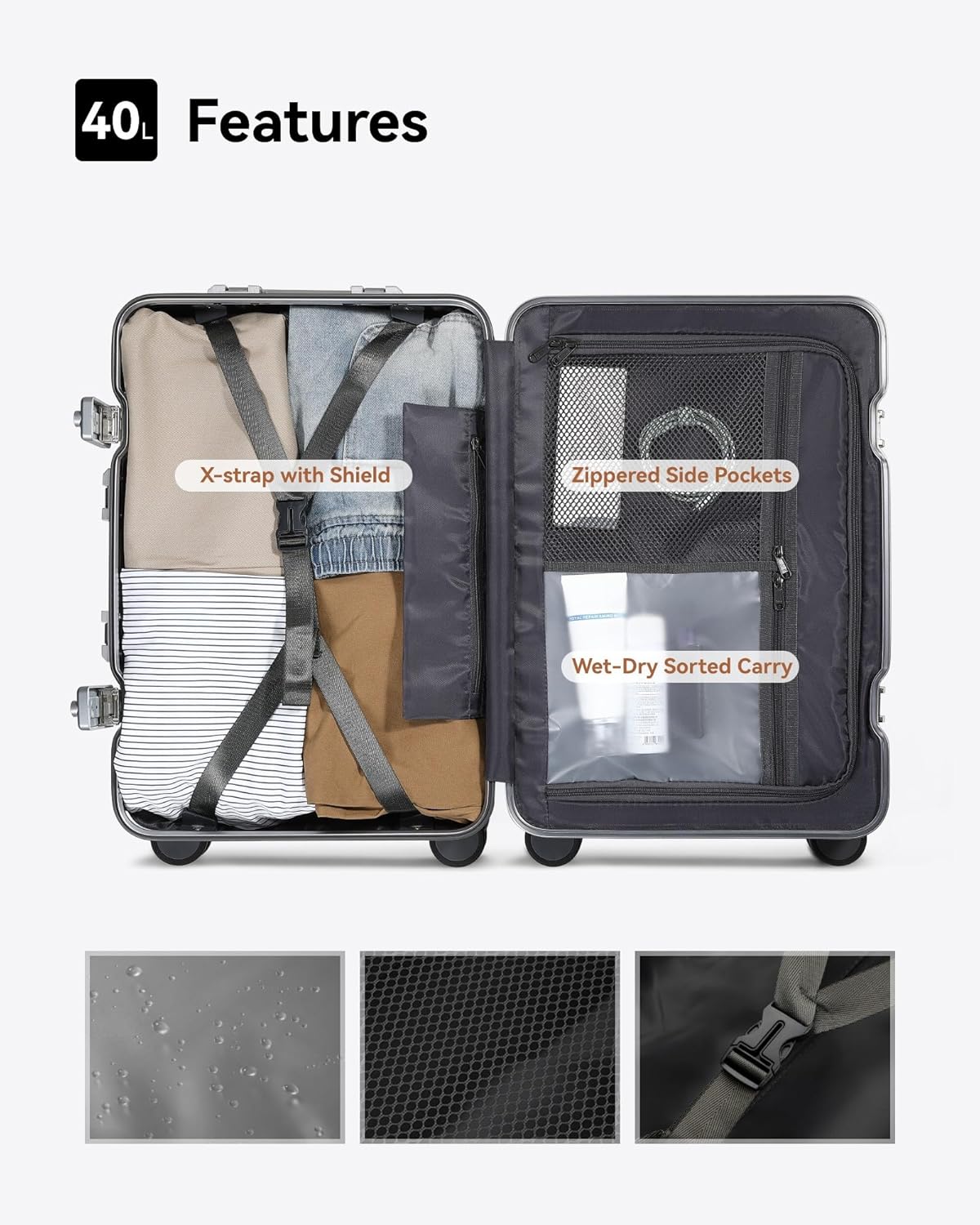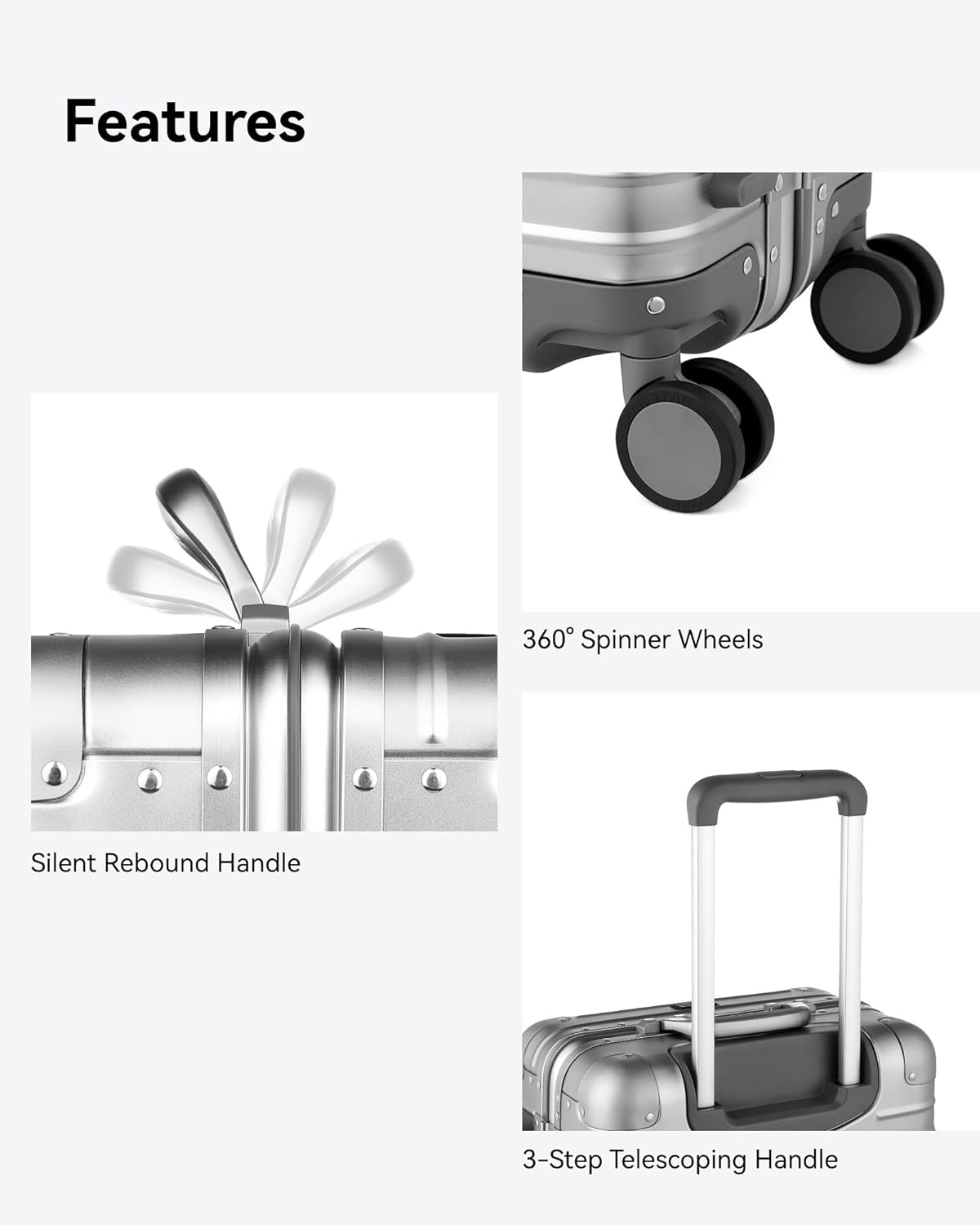







The Ultimate Guide to Carry-On Luggage: What You Need to Know Before You Fly
When it comes to air travel, carry-on luggage plays a pivotal role. It’s more than just a bag; it’s your travel companion. Knowing how to choose the best one can save you time, money, and unnecessary stress. So, what makes carry-on luggage the best choice for your journey?
Why Choose Carry-On Luggage?
Convenience and Accessibility
Carry-on luggage allows you to keep your essentials close. Imagine being on a 10-hour flight, and all your favorite snacks, entertainment devices, and comfort items are within reach. This ease of access enhances your travel experience, ensuring you don’t have to experience the hassle of checking bags.
Avoiding Baggage Fees
Airlines often impose hefty fees for checked luggage. By opting for a carry-on, you circumvent these costs and stretch your travel budget. Airlines may vary in their policies, but many offer free carry-on options, particularly for smaller bags.
Time-Efficiency
Imagine landing at your destination, bypassing the baggage claim line, and heading straight to your vacation or business meeting. With carry-on luggage, you save valuable time at both departure and arrival points.
What to Consider When Buying Carry-On Luggage
Size Matters: Understanding Airline Restrictions
Airlines enforce strict size limitations on carry-on bags. Most specifications require luggage to be around 22 x 14 x 9 inches, including wheels and handles. Always check the specific airline’s guidelines before purchasing to avoid surprises at the airport.
Material Durability: What Should You Choose?
The material of your carry-on luggage affects its durability and weight. Popular materials include:
- Polyester: Lightweight, economical, and resistant to wear and tear.
- Nylon: Slightly heavier but provides excellent durability and resistance.
- Hard-shell cases: Often made from polycarbonate or aluminum, these options provide superior protection against impact. Such materials are ideal for safeguarding fragile items.
Weight Consideration: How Light is Too Heavy?
Airlines often impose weight restrictions for carry-on luggage, typically around 15-22 pounds. Consider choosing lightweight materials that allow you to pack efficiently without exceeding these limitations.
Key Features to Look For in Carry-On Luggage
Wheels and Handles: How Do You Prefer to Travel?
- Spinners: Four wheels that rotate 360 degrees make maneuvering a breeze in crowded airports.
- Two-Wheel Models: More stable on uneven surfaces but less flexible than spinner options.
Also, look for a comfortable handle that extends for easy pulling or pushing without much strain.
Security Features: What’s Your Peace of Mind Worth?
A good carry-on luggage should come with a TSA-approved lock. This feature allows security personnel to inspect your bag without damaging your lock while ensuring your belongings remain protected.
Organizational Aspects of Carry-On Luggage
Compartments and Pockets: Is Organization Key for You?
Carry-on luggage with multiple compartments allows for better organization. Consider these features:
- Laptop compartments: Essential for business travelers who need to separate their tech gear.
- Wet/dry pockets: Perfect for keeping damp items separated from clean clothes, especially important if you’re somewhere humid or visiting a beach.
Expandable Options: How Do You Manage Space?
For those who want to maximize packing capacity, look for luggage that can expand, giving you extra space when necessary.
Pros and Cons of Carry-On Luggage
Pros: Benefits of Carry-On
- Quick access to essentials during flights.
- No checked baggage fees to worry about.
- Less time spent at the airport overall.
Cons: Drawbacks of Carry-On
- Limited space can result in tough packing decisions.
- Potential weight restrictions need to be considered.
- Might not accommodate large or bulky items.
Conclusion: Choose Wisely for a Better Journey
Selecting the right carry-on luggage can transform your travel experience. By considering size, material, security features, and organizational capabilities, you choose a bag that not only meets airline regulations but also enhances your productivity and comfort. Make every journey enjoyable by investing in quality carry-on luggage.
FAQs About Carry-On Luggage
1. What is the standard size for carry-on luggage?
Most airlines allow a carry-on size of approximately 22 x 14 x 9 inches, but it’s essential to check your airline’s policy.
2. Can I bring a backpack as a carry-on?
Yes, a backpack can qualify as carry-on luggage if it fits within the airline’s size restrictions.
3. What is the best material for carry-on luggage?
It largely depends on your preference; hard-shell cases offer great protection, while soft-sided bags can provide more organization.
4. Are additional locks necessary for carry-on luggage?
While most carry-ons come with TSA-approved locks, adding personal locks can offer extra security, especially during non-airport travel.
5. What should I pack in my carry-on?
Essentials like travel documents, medications, electronics, snacks, and a change of clothes should be packed in your carry-on.
Choosing the right carry-on bag is a critical part of any travel strategy. With this comprehensive guide, you are now equipped to make an informed decision that caters to your travel style for a smoother journey ahead.








